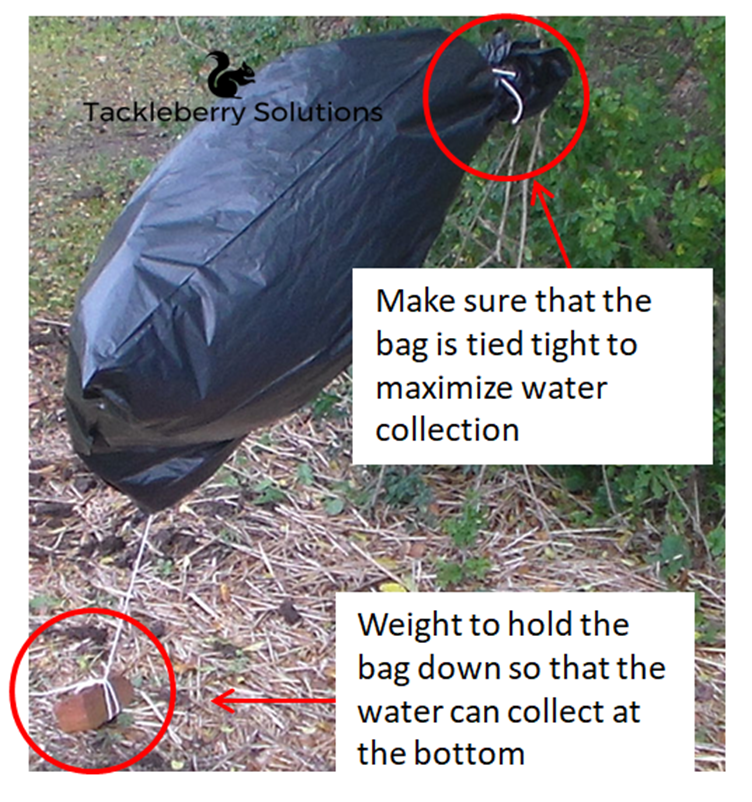I wanted to share this article with you that I had written especially for The Tiny House Blog.
How to filter water from a stream without a fire and no modern-day equipment
You’re lost in the woods and you have no canteen, no way to purify the water and no ability to make a fire. At this point, you’ve got less than 3 days to figure something out before you die of dehydration. Furthermore, the longer that you go without water, the more difficult that it will be for you to function and think properly.
As a result, the worse your chances of surviving through this will be.
In this article I’m going to share with you 3 ways that you can purify or disinfect water when lost, homeless or in any kind of survival situation where you have no assets except maybe a clean black bag and some string.
- Grape Vines
- Dirt Filters
- Tree or Bush Branches
Hello, my name is Kit Arthur. I am the CEO and founder of Tackleberry Solutions. We teach wartime tactics for civil and home defense purposes. Our goal is to save as many lives as we can by helping others and teaching them how to survive during dangerous times. Today I wanted to teach you vital survival skills directly out of our SERE program = Survive. Escape. Resist. Evade.
Grape Vines
A wild grape vine is your best friend in the right season. Not only can you eat the grapes that grow on it, but you can cut the vine and suck the water out of it.
The vine will purify the water as it pulls it out of the ground and through its roots. Just remember that if it is clear, you can drink it. If it is milky, you can bathe with it.
You can also pull the bark off the grape vine and braid it to make a rope out of (which will come in handy if you don’t have any string for option 3 of getting purified water.)

Where do Wild Grapes Grow?
There are dozens of wild grapes found throughout the continent, all of which have large, serrated, three-lobed leaves. Some of the most common wild grape species found in North America are fox grape (V. labrusca), summer grape (V. aestivalis), and riverbank grape (V. riparia). As their names suggest, wild grapes can be found along streams, ponds, roads, and in open woods clambering up trees. They grow easily and are much less fettered with disease and pests than cultivated grape cultivars, making them quite prolific growers. Another reason they can be classified as wild grape weeds.
How to Identify Wild Grape Vines
While there are many species of wild grape, all look much the same but, unfortunately, so do many other native vines. Some of these “copy-cat” vines are edible but unpalatable, while others are poisonous, so identifying wild grapes correctly before ingesting them is of paramount importance.
Dirt Filters
If you were to ever find yourself in a situation where you are trying to survive and you’ve got absolutely nothing with you, then this method may help as a last resort.
8 feet of sand will purify water. So if you’re unable to create a filter that is that long, you can find a source of water. Then walk about 8 feet over and dig until the hole fills up with water. The theory here is that the dirt/sand will filter the water for you as it seeps into the hole. (This is similar to how a well system works.)
Warning: Be cautious with what water source you are using for this method as it is not 100% fool proof. If you’re getting water from a pure mountain stream, you should be fine (so long as there isn’t anything decaying in it upstream.) However, if you’re getting it from a polluted pond with fecal matter floating in it, I wouldn’t trust it.
Side Note: Moving water will purify itself as it flows down a stream. So long as it is not re-contaminated, it can be very clean and refreshing. Standing water does not. Which is why using the filter method with a moving stream is more reliable.

Tree or Bush Branches
This may sound silly, but it does work. Plants sweat too in order to cool themselves. If you have a black trash bag, you can build a water purifier out of a tree or large bush.
Simply place the bag over the bush or a limb on a tree. Tie it off so that no air can flow throughout the bag. Then tie a small rock or stick to the bottom corner of the bag and let the sun do the rest.
By morning, you should have something to drink in the bag. This works best if you can get the bag in direct sunlight.
Conclusion
As you can see, should you find yourself in dire circumstances, you can still get water. I’d also like to point out that these are not the only ways that you can acquire clean water when you don’t have a life straw or water purification tablets.
If you would like to learn more about survival and living long enough to make it back to civilization/safety during an emergency, I encourage you to check out our SERE program.
If you have a question, or something that you would like to add, feel free to leave a comment below.
Also, if you learned something valuable from this article, I encourage you to share it with everyone that you can. Who knows, it may save someone’s life someday.



Sir, I may be mistaken, but I believe the last method (transporation bag) covering the leafy branch should be clear plastic to allow full light to strike leaves. At least that is my understanding.
This sounds like an experiment that I’d be interested in actually trying to see which worked better. When we went through SERE school, we were taught to use our wet weather bag out of our pack. It is a rubberized black on one side an nylon od green on the other. So there was no way that water could penetrate it.